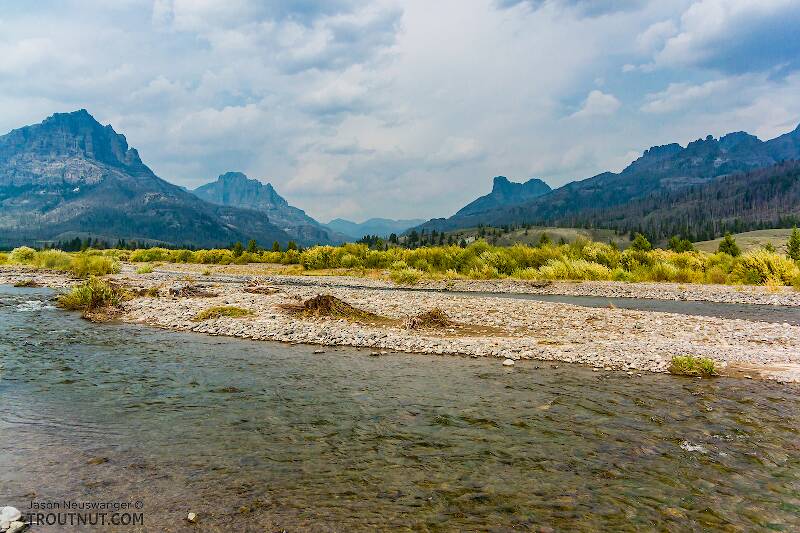
Blue-winged Olives
Baetis
Tiny Baetis mayflies are perhaps the most commonly encountered and imitated by anglers on all American trout streams due to their great abundance, widespread distribution, and trout-friendly emergence habits.


Mayfly Species Siphlonurus barbaroides (Gray Drakes)
Species Range
Physical description
Most physical descriptions on Troutnut are direct or slightly edited quotes from the original scientific sources describing or updating the species, although there may be errors in copying them to this website. Such descriptions aren't always definitive, because species often turn out to be more variable than the original describers observed. In some cases, only a single specimen was described! However, they are useful starting points.
Male Spinner
Wing length: 10 mm
A species much resembling Siphlonurus barbarus and Siphlonurus columbianus, but differing in finer details of structure of penes. Thorax and dorsum of abdomen, except for usual pale areas, pitch black. Wings without the brownish tinge present in columbianus. Abdominal sternites paler than tergites. Lateral patches combine with oblique streaks to form lateral triangles. On sternites 1 and 2, these triangles are fused at the median line on the anterior margin, so that most of these segments are dark. Penes differ in details of structure from barbarus and columbianus (see fig. 122).
Start a Discussion of Siphlonurus barbaroides
References
- Needham, James G., Jay R. Traver, and Yin-Chi Hsu. 1935. The Biology of Mayflies. Comstock Publishing Company, Inc.
Mayfly Species Siphlonurus barbaroides (Gray Drakes)
Species Range
Common Names
Resources
- NatureServe
- Integrated Taxonomic Information System
- Global Biodiversity Information Facility
- Described by McDunnough (1929)

